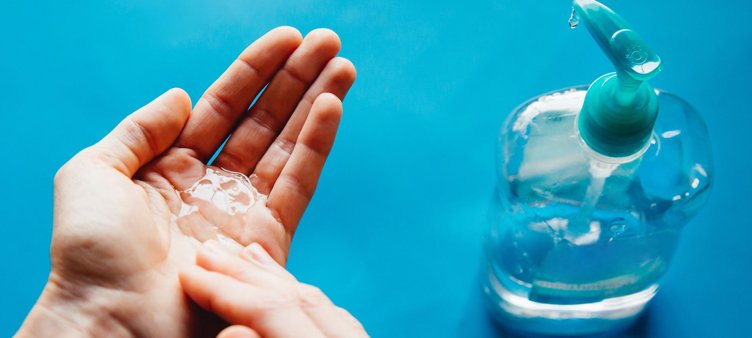
It should come as no surprise that sales of hand sanitiser dispenser have skyrocketed this year due to the coronavirus (COVID-19) pandemic. Even now, people can still be found scouring the aisles of supermarkets, pharmacies, and even regular retail stores in an attempt to get their hands on some hand sanitiser gel.
Throughout the pandemic, government guidelines, medical experts, and health authorities such as the World Health Organisation and the U.S. Centers for Disease Control and Prevention have advised us to wash our hands for at least 20 seconds to prevent the spread of germs.
It’s not always feasible, convenient, or possible for us to wash our hands with soap and water, however. And given that the coronavirus can be spread very easily—much more easily, in fact, than some other common viruses and diseases—it’s extremely important that we’re regularly cleaning our hands with something.
Indeed, the virus is so easy to spread that the current advice is to clean your hands whenever you’ve come into contact with something that somebody else has, such as a door handle or worksurface.
This is why hand sanitiser has become a staple item for pretty much everyone this year. If you’re not able to wash your hands with soap and water then hand sanitiser is the next best thing, as long as it meets a few requirements (more on this later).
In this guide, we’re going to tell you everything that you need to know about hand sanitisers and hand sanitiser products.
Simply put, hand sanitiser is a liquid or gel that’s massaged into the hands to kill germs and bacteria. While there are lots of different hand sanitisers and brands, they all do the same thing and have the same or very similar active ingredients.
The main difference between hand sanitisers is whether they contain alcohol or are alcohol-free. This is because the active ingredient in these two types of hand sanitiser is slightly different.
Alcohol-based hand sanitisers will contain an active ingredient such as alcohol or isopropanol. These are extremely effective antiseptic products that kill many of the pathogens, germs, and bacteria that end up on our hands, including coronavirus. Alcohol-based hand sanitisers are widely used in healthcare and clinical settings because of their effectiveness.
The U.S. Food and Drug Administration (FDA) recommends that an alcohol hand sanitiser should contain between 60 percent and 95 percent alcohol. This high concentration of alcohol has raised concerns in the past, both in the media and healthcare community. This is because alcohol is flammable in high concentrations, and it can also be dangerous for children who could develop acute alcohol poisoning if enough is ingested. When used with care, however, these risks are marginal at worst.
Although they’re very effective, alcohol-based hand sanitisers can be drying for the skin and cause cracking. They also don’t kill every type of germ or pathogen, the most notable of which being norovirus (this is why soap and water is always recommended—it kills everything.)
While most alcohol-based hand sanitisers are gel- or water-based, alcohol-free hand sanitisers usually come in the form of a foam. These products typically contain the active ingredient Benzalkonium Chloride, a quaternary ammonium.
Despite the absence of alcohol, alcohol-free hand sanitisers still provide the same level of protection as alcohol-based hand sanitisers because of the active ingredient. Due to the absence of alcohol and the inclusion of skin softeners and ingredients like vitamin E, alcohol-free hand sanitisers aren’t harsh on the skin and are non-toxic.
Alcohol-free hand sanitisers provide a viable solution for people who can’t use alcohol-based hand sanitisers either due to religious restrictions or sensitive skin. Alcohol-free hand sanitisers are also non-damaging to surfaces, clothes, and other fabrics because there’s no alcohol in them.
In both alcohol-based and alcohol-free hand sanitisers, it’s the active ingredient that does all the work to kill bacteria and viruses on your hands.
Alcohols have long since been known to kill germs by attacking their protective outer proteins and dissolving their membranes. This stops the germs from reproducing and functioning, effectively killing them. In alcohol-free hand sanitisers, the active ingredient works in a similar way.
Scientific research has shown that hand sanitiser consisting of 60 percent ethanol or 70 percent isopropanol is very effective against microbes such as 2019-nCoV. These are the ingredients that are officially recommended by the United States Centers for Disease Control (CDC).
If you’re going to use hand sanitiser instead of washing your hands, it’s important that you do it properly so that it will be effective.
You need to use enough hand sanitiser so that it covers the entirety of the fronts and backs of your hands, including your fingernails. At the same time, don’t use so much that your hands are dripping—try to achieve a balance.
Once the sanitiser is on your hands, thoroughly rub it in so that there’s no residue left at all. Don’t stop rubbing your hands together until all the sanitiser has evaporated and your hands have dried completely. Depending on the sanitiser you’re using and its alcohol content, this can take anywhere from a few seconds to a minute or so.
Avoid wiping sanitiser on your clothes. Doing this could spread germs onto our clothes and damage them if it’s got a high enough alcohol content.
As mentioned earlier, public health authorities recommend that people wash their hands with soap and water whenever it’s possible to do so, especially when you can see that your hands are dirty or when you’ve come into contact with lots of touchpoints.
Consider using hand sanitiser when:
You should avoid using hand sanitiser when:
If you’re using alcohol-based hand sanitiser, it’s important to do so safely. There are two potential risks that we’ve briefly covered: flammability and toxicity.
Flammability: Alcohol is flammable. It’s as simple as that. If you’ve ever seen bartenders light drinks and shots on fire, you’ll already know this. Hand sanitisers with very high alcohol content (i.e. in the 75 percent and above range) can be flammable and it’s important to take care when using them. Don’t use them near open flames or when smoking cigarettes, for example. It’s very much a common sense situation.
Toxicity: Swallowing alcohol-based hand sanitisers can cause alcohol poisoning. This is particularly problematic for children who are more susceptible to alcohol’s effects, and recovering alcoholics. Some teens have also been known to swallow hand sanitiser in an attempt to get drunk. Hand sanitizers should be stored out of the reach of young children and should be used with adult supervision.
Hand sanitiser is widely available in shops and online; it’s no longer scarce like it was at the start of the pandemic.
At Hand Sanitiser Station, we sell a range of hand sanitiser dispenser and hand sanitation products like gels and dispensers. We sell to both private individuals and businesses/companies that are looking for a one-stop-shop for all their hand sanitation needs.

Emir Limam – E11 Group B.V. Netherlands – Fraudster
24 May 2023
When to Take a Test After Covid Exposure?
30 January 2023
A Rapid Antigen Test vs a Lateral Flow Test for Covid-19
30 January 2023
08/02/2021 at 12:39 PM
[…] The Complete Guide to Hand Sanitiser […]